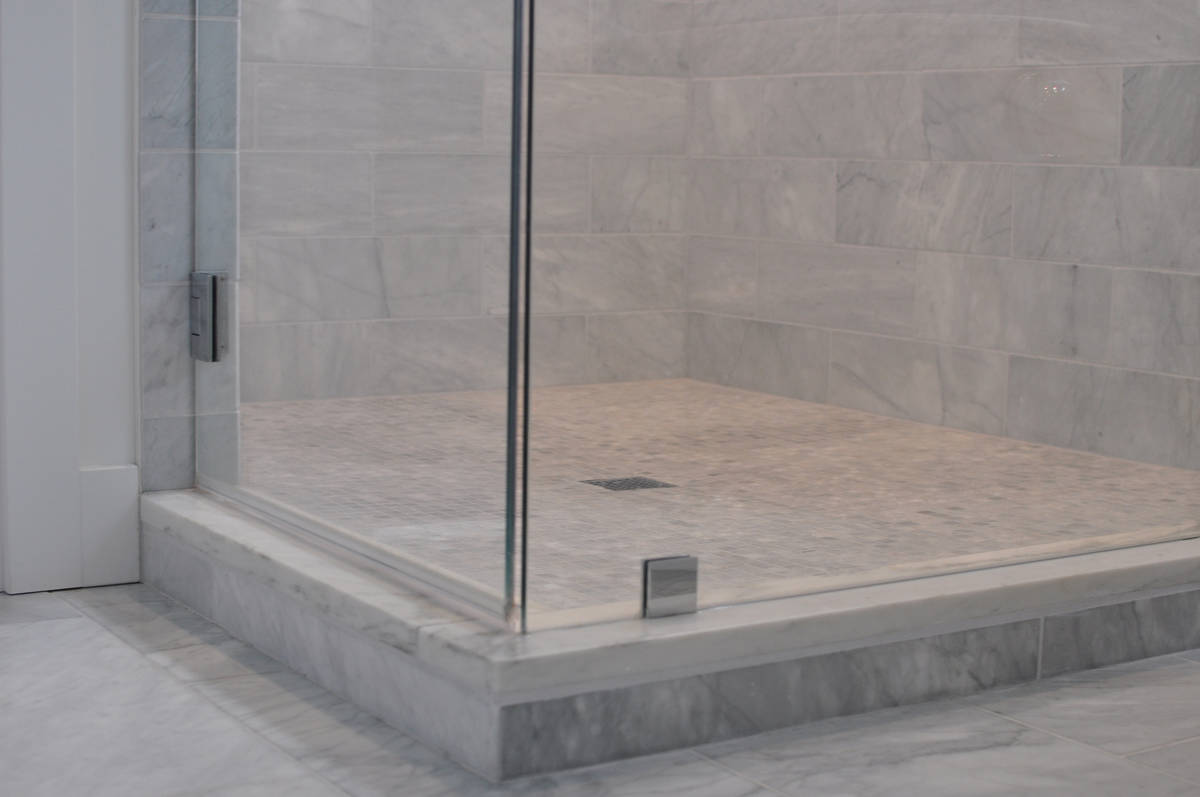Uneven shower doors a common repair job
Q: I have a shower door that is giving me problems. It’s made of glass with a metal border around it, and swings from a continuous hinge. The problem is that the door rubs against the bottom of the opening and against the side opposite the hinge. I don’t see any way of adjusting it.
A: Flimsy shower doors are wonderful. Not only do they generate plenty of service calls, but occasionally they need to be replaced. It’s a vexing double-whammy for the customer.
Most of us have the same type of shower door: a thin piece of glass surrounded by an aluminum frame. The supporting frame pieces for the door are also aluminum and, depending on the size of the opening, you may have additional glass and aluminum panels.
For example, some showers have a pony wall with an additional piece of glass on top of it. These units are screwed and caulked together.
The door has a magnetic strip on the latch side that holds it to the other side of the frame. The opposite side of the door is hinged to a channel that you can adjust. This channel is U-shaped and it moves in and out. The whole works is held in place via the headrail that slips over the vertical framework and is screwed to each of these pieces.
You can make the necessary adjustments by removing the screws, adjusting the channel and screwing it back together.
Before you start, you need to determine where the door needs adjusting. If your shower door is rubbing on the bottom track, you might first look at the shower sweep, which is the rubber piece secured to the bottom of the door to keep water from splashing out. In many cases, the sweep will come loose and stop the door from opening and closing properly.
To correct this, you can loosen the screws that hold the sweep in place, adjust the sweep back into position and tighten the screws. If the sweep looks really nasty, a new one costs about $20.
If your door is rubbing on the latching side, you will have to adjust either the hinge channel or the latch channel. You need to make small adjustments and unscrew only one screw at a time.
It’s always easier to adjust the latch channel because you don’t have to contend with the weight of the door. The screw at the top will be driven through the headrail into the vertical channel. Unscrew this one and move it away from the door slightly.
Do the same with the bottom screw and your job just might be over. If you move the channel too much, you may have to adjust the bottom even if it wasn’t part of the original problem.
If your door hits at the bottom of the opening, either move the bottom of the latch channel away from the door edge, or move the bottom of the hinge channel inward. This will fix the problem by moving the latch edge of the door downward, but you may need to adjust the top of one of the channels so you have a uniform gap. You may also need to adjust the sweep.
Mike Klimek is a licensed contractor and owner of Las Vegas Handyman. Questions may be sent by email to handymanoflasvegas@msn.com. Or, mail to 4710 W. Dewey Drive, No. 100, Las Vegas, NV 89118. His web address is www.handymanoflasvegas.com.
Do-it-yourself
Project: Adjust a swinging shower door
Cost: Under $20
Time: About 1 hour
Difficulty: ★★



















